Contents
Mosses and lichens are an indispensable attribute of an old garden, especially if it is not looked after. What are they? Do they harm trees? Do I need to get rid of them and how? We will try to answer all these questions in our article.
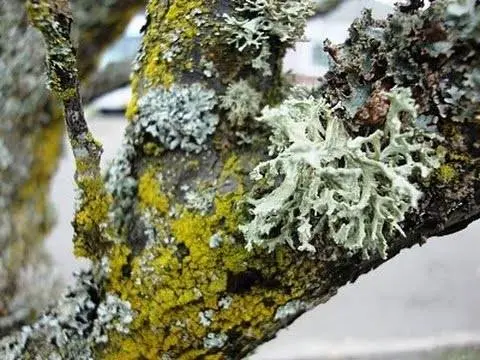
What are lichens
This is an amazing creation of nature, which is a symbiosis of a fungus and algae or cyanobacteria. Lichens do not have roots, therefore, settling on another plant, they do not feed on its juices. This unusual natural species is able to fall into suspended animation in the absence of moisture and spend many years in this state. Rain or dew revive the lichen and return it to its original state.
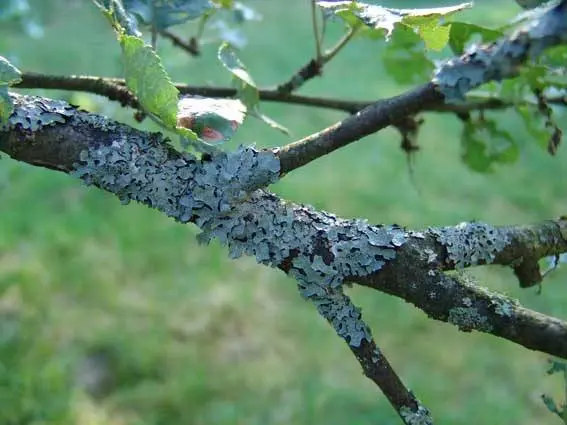
Experienced gardeners have long noticed a connection between the health of wood and the amount of lichen on it. Young trees are usually not affected. And this is understandable: their vegetative organs grow very quickly, the bark stretches and is a very uncomfortable place for the existence of a lichen. In adulthood, especially if the tree is sick, bark growth slows down greatly. Such conditions are quite suitable for the lichen, and it settles on the trunk. Does it harm him? We have already made sure that the lichen will not suck out the juices from it, it is not so arranged. But it is quite capable of giving shelter to various pests and fungi under its cover: moisture after rain lingers there for a long time.
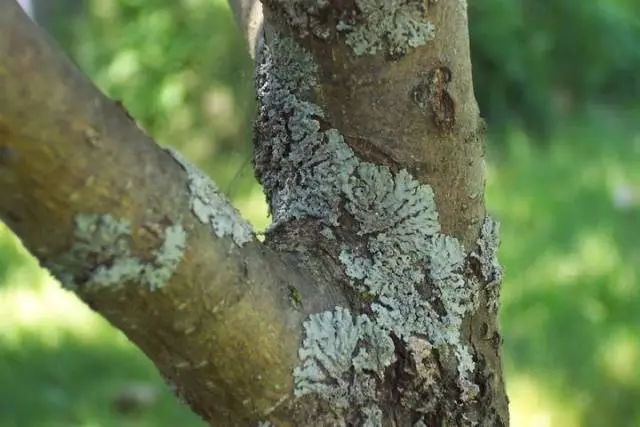
Therefore, it is better not to leave it on the trunk and branches.
This fact should serve as a reason for the gardener to revise the plantings and treat diseased plants, and if this is not possible, remove them so that the infection does not affect neighboring ones.
The colonization of trees by lichens begins with the appearance of a greenish coating on the branches, usually from the shaded side – unicellular algae settled on the bark. Fungal spores are always present in the air. Entering into symbiosis with algae, they form lichens. Their shape and color are varied.
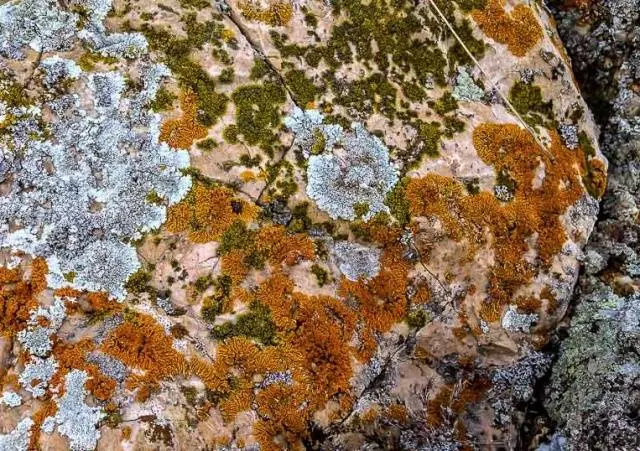
In nature, there are up to 25000 species of lichens. According to the construction and method of growth, three groups are distinguished:
- scale, otherwise crusty, outwardly they look like a thin crust (not thicker than 5 mm) or like scattered powder;

- bushy, they also live on trees and can reach a height of 7 m – such specimens grow for a long time, hanging from the trunk, they resemble a real wall. In the photo – falling asleep;

- leafy lichens; among them, wall xanthoria is best known to gardeners – for its bright color it is sometimes also called wall goldfish.

Another representative of leafy lichens is xanthoria lobaria.
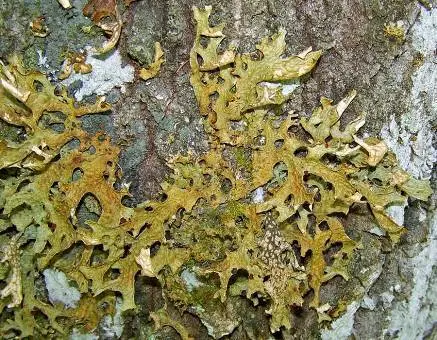
Lichens are considered indicators of air pollution; with a small amount of oxygen, they are not able to develop. Bushy species are the most sensitive, followed by foliose, then scaled ones.
What is moss
Unlike lichen, moss is a plant. But it has no real roots. Moss feeds in the same way as all plants, but it does not suck the juices from those on whom it settles. Moss needs very little soil to feed; it can even live on rocks. Moss itself is not harmful to trees. He settles on them for the same reason as the lichen.
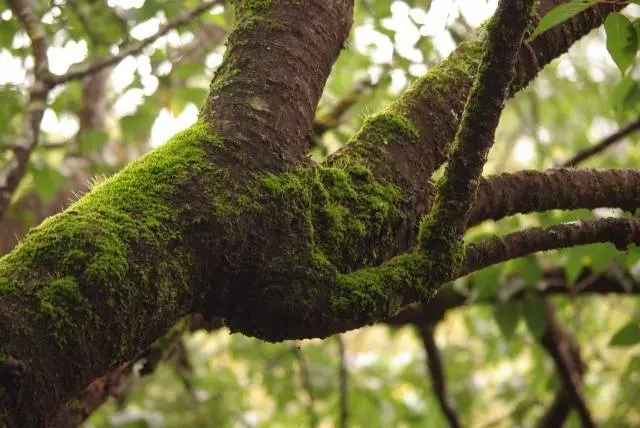
And in the same way it gives shelter to various pests and pathogens. Unlike lichens, mosses grow very quickly and thrive even on young wood. The main condition for their existence is high humidity. It happens where the air circulates poorly. Therefore, pruning even young trees is a must.
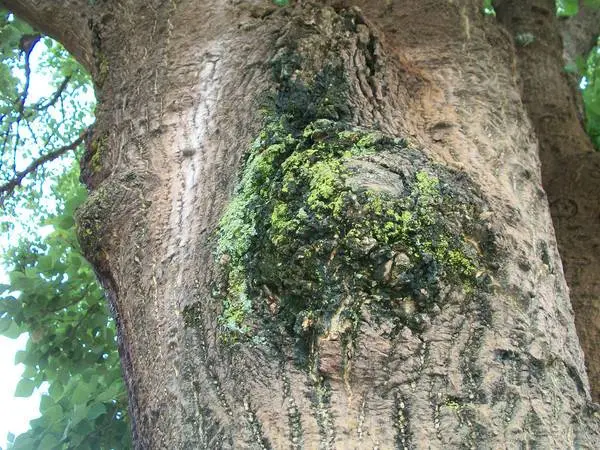
This photo shows that the moss growing on the trunk is distinguished by a variety of species.
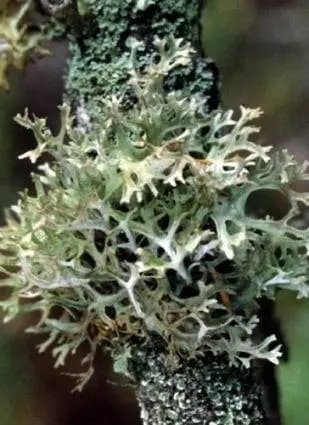
Unlike lichens, moss is used in garden design. Now he is at the peak of fashion, and many are happy to decorate shady areas with him. But we must not forget that moss reproduces by spores.
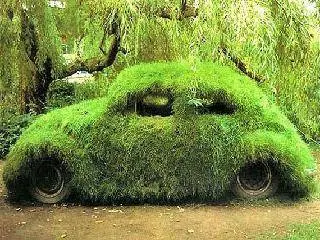
Causes of appearance
The following reasons contribute to the appearance of lichen and moss on fruit trees:
- untimely and incorrect pruning, which causes thickening of the crown;
- poor condition of the roots, and especially wetting due to the high standing of groundwater;
- abundant watering of the garden;
- damage to the bark and wood of fruit trees from the sun or frost;
- disease or advanced age of the tree.
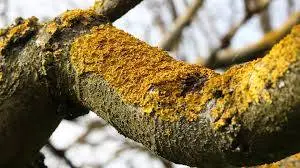
Lichens grow slowly and take a long time to cover the entire trunk. If the garden is inspected regularly, the gardener will immediately notice their appearance. That’s when you need to start fighting them. Why can’t you pull?
The larger the trunk area is covered with lichen or moss, the more the bark will be damaged when it is removed and the metabolic processes in the wood will be more disturbed. Not only will it take a lot of time to cover up wounds and disinfect them, there is always a risk that pathogens will get into the damaged bark, and this is dangerous for a tree. If mosses and lichens on fruit trees do not take nutrients from an apple or pear tree, maybe there is no point in fighting them?

Why you need to remove them
There are several reasons for this operation:
- under mosses and lichens on fruit trees, tissue respiration in the bark and wood is difficult;
- lichens secrete lichen acid, it inhibits the growth and development of the tree on which they settled, although it destroys pathogens of fungal diseases;
- pests find shelter under them;
- the appearance of lichens means that parasitic fungi will soon settle on the trunk – and this is already a disaster.
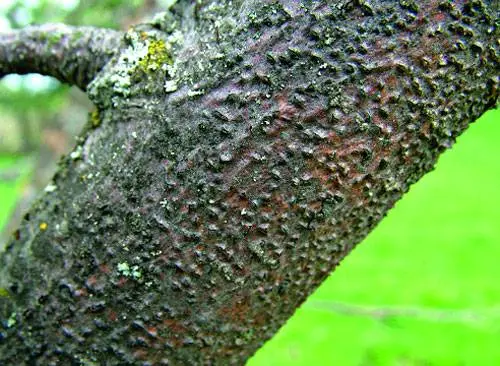
How and when to clean trunks and branches
If such a problem has appeared in the garden, it must be solved by all means and as soon as possible. When is the best time to clean trunks?
If mosses and lichens appeared on the trees, processing should be carried out outside the growing season:
- in the spring it is done before the buds swell;
- in autumn, the best pair for cleaning trees is the time after the completion of leaf fall.

It is not enough to clear the trees of mosses and lichens, everything must be done so that they no longer appear. Therefore, it will be necessary to act comprehensively.
Oddly enough, to solve the problem with lichens and mosses on trees, you need to trim the crown. If it is not produced, unwanted inhabitants will reappear on the trunks. For proper growth and formation of fruit trees, for an abundant and healthy fruit harvest, pruning should be done regularly both in early spring and late autumn. With a sparse crown, the trees are well ventilated, damp air does not stagnate between their branches, which means that favorable conditions are not created for the appearance and growth of mosses and lichens.
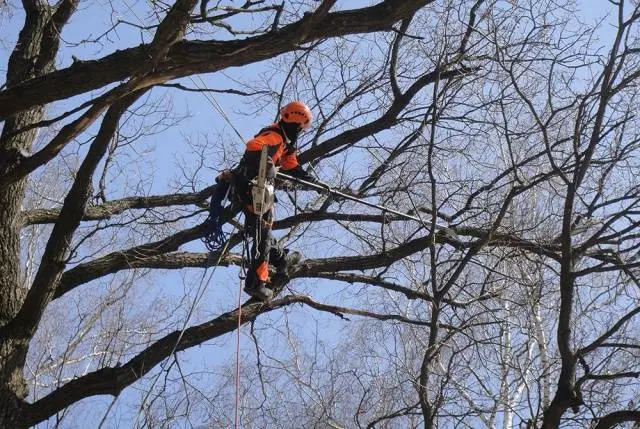
What methods of struggle should be applied to get rid of mosses and lichens on trees?
Trunk cleaning algorithm
Helps to cope with the growth of moss lichens on trees ferrous sulfate solution – iron sulphate. For fruit trees, it is bred at the rate of 300 g per 10 liters of water, for pome crops, the drug needs more: 500 g per 10 liters.
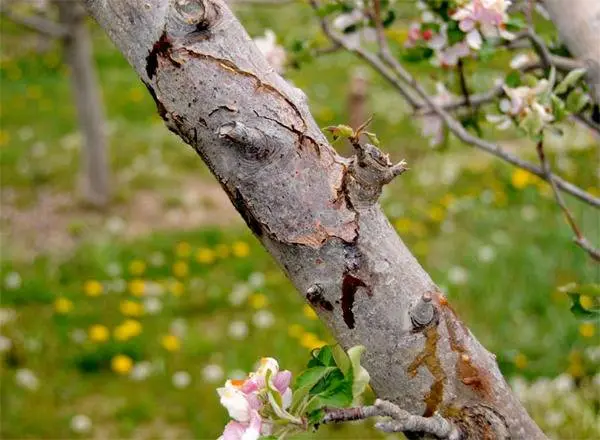
When treating young trees, one must not forget that the product has an acidic reaction and is quite aggressive. It is enough to process the thin sensitive bark of young fruit trees only once, preparing them for winter. Old trees are processed 2 times during the season.
Processing can be done by spraying. Sometimes it is more convenient to apply the solution with a flat brush, designed for whitewashing plants. Just a few days are enough to see fallen moss and lichens.
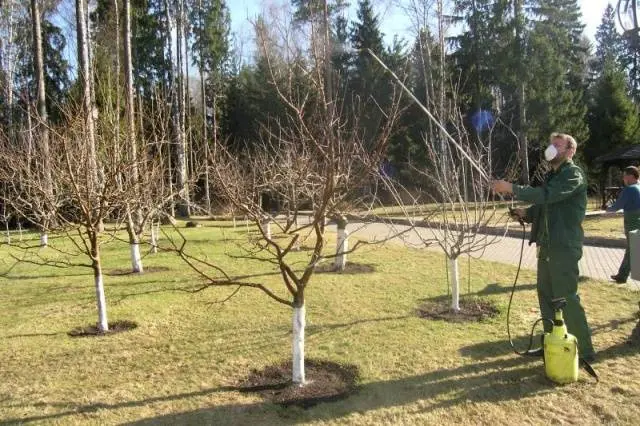
There is another chemical way to deal with mosses and lichens that have occupied trees. To do this, pour 0,6 kg of slaked lime 0,5 liters of boiling water. To completely dissolve the mixture, put on a small fire and mix well. Add 0,4 kg of sulfur and 1,5 liters of water, boil under the lid for 15 minutes. Chilled broth can be stored in plastic or glassware, but not for long. So that it does not oxidize, a little machine oil is carefully poured along the wall. For spraying, it will have to be diluted in a proportion of 0,1 liters of decoction per 5 liters of water.
Another chemical remedy for lichen on fruit trees. We dilute two large pieces of laundry soap, a kilogram of salt in 10 liters of hot water and add 2 kg of ash. We mix everything well and coat the trunks of trees damaged by lichens and mosses.
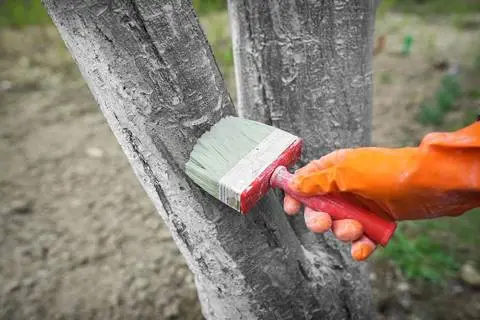
There are types of lichens that are very difficult to deal with with all of the above means. To fight them, they use antifungal drug Skor according to instructions. This treatment can be carried out before the buds have blossomed.
Now let’s get started to the mechanical removal procedure fruit trees overgrown with mosses and lichens. First of all, spread a plastic sheet under the tree so that all the particles that fall from the trees can be taken out of the site and burned.
For mechanical processing, a rigid mitt, a wooden spatula or a plastic brush is suitable. We clean the tree with them, choosing a day with high humidity.
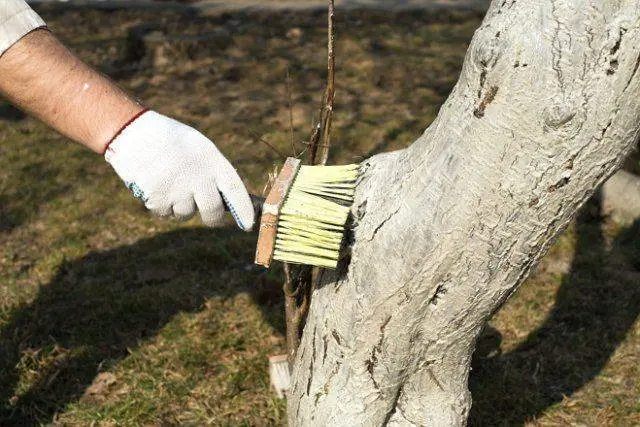

Video about cleaning trees from mosses and lichens:
What to do if damage to the cortex does appear? They are processed Bordeaux liquid at a concentration of 1%. Then all wounds are covered with garden pitch with a layer no thicker than 1 mm. Choose a day with a positive air temperature for processing. If it is below 0 degrees, the var will harden and it will be impossible to use it. In the absence of this remedy, the wounds are covered with pure clay or its mixture with cow dung: for 200 g of clay, 100 g of manure with the addition of chopped straw. After dilution with water, the mixture should have the consistency of thick sour cream.
The fight against lichen on fruit trees gives a good result if you use soda ash solution. It is prepared from half a glass of soda and a bucket of water, and applied to the lichens with a brush.
Some gardeners tie to lichens crushed sorrel leaves. You can do it even easier: dilute oxalic acid with water in a ratio of 1: 8 and coat problem areas.
It will also be useful treatment of near-stem circles of trees with a solution of urea. Take a matchbox of the remedy and dilute it in a 10-liter bucket of water. This solution is watered around the trees.
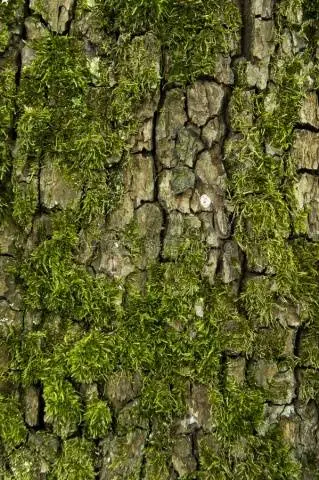
If the branches of a tree or shrub are completely covered with lichen, they should be cut out, they are already old.
Prevention of the appearance of mosses and lichens
In order to prevent moss and lichen from entering the garden, preventive measures must be taken.
- Timely pruning and thinning of the crown.
- Fighting high standing groundwater with drainage ditches.
- Spring treatment of the garden with a 1% solution of copper sulfate. It can be carried out at an air temperature not lower than plus 5 degrees. Particular attention during processing is paid to the forks of the branches.

- Trees will need to be whitewashed in autumn. Here, too, there are subtleties: for young and old trees, whitewash has a different composition. To whitewash old trees, 10 kg of oily clay, 1 g of blue vitriol and 400 kg of slaked lime are added to 2 liters of water. After thorough stirring, the trees are whitewashed so that the whitewash layer is about 2 mm. You can use another composition: for 2 kg of ready-made water-based paint, you need to add 30 g of karbofos. To whiten young trees, this mixture must be diluted with water in half.

- Such whitewashing will protect young trees from damage by hares during the winter.
- You can use Bordeaux liquid for whitewashing. To prepare it in 2 buckets made of plastic or enameled, but not galvanized, a kilogram of slaked lime is separately bred by adding 5 liters of hot water and a quarter kilogram of copper sulfate, you also need to add 5 liters of hot water. The solutions are mixed by adding a little clay or cow dung.
About why and how to whitewash fruit trees, you can watch the video:
Removal of mosses and lichens is a necessary procedure. Clean trees are a guarantee of health, without which you cannot get a rich harvest.










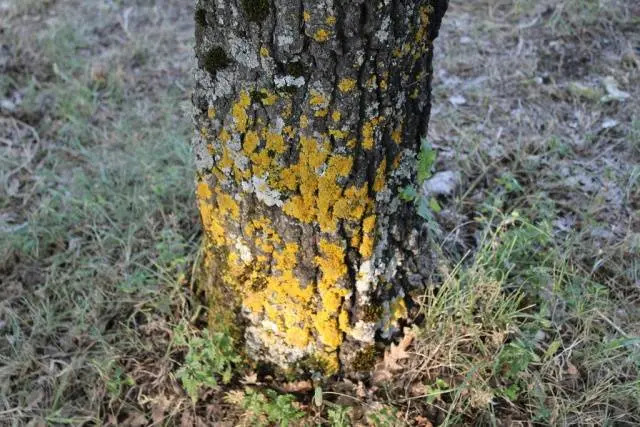

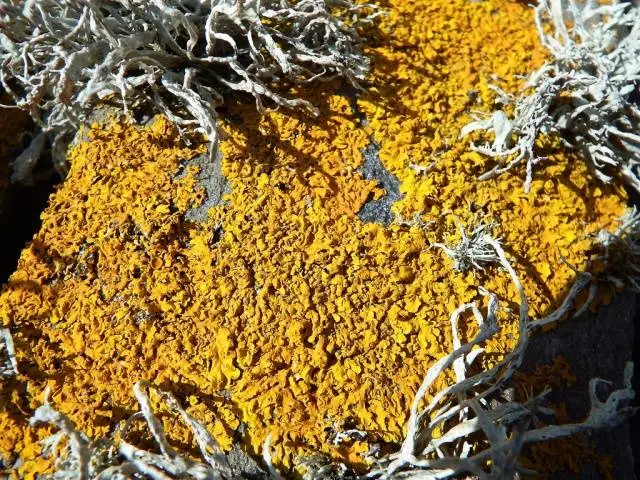
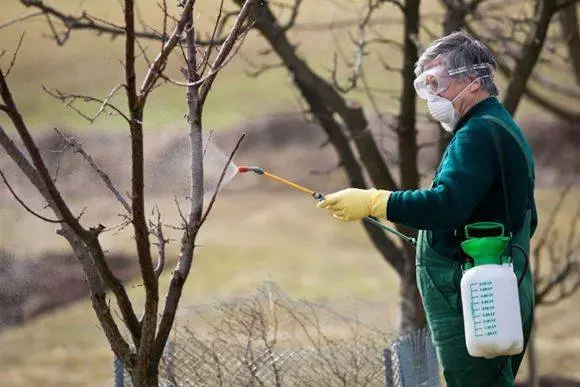

این آموزشها بدلیل ترجمه ناقص شما قابل استفاده نیست نظرات یک باغبان باتجربه از این ترجمه سراپا غلط وگمراه کننده زیبنده تر بود